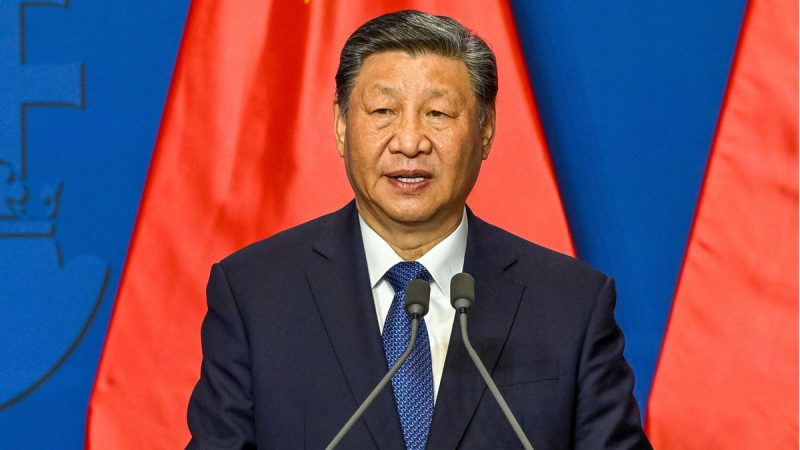The Democrats, or Socialists, or whatever they are these days, are hopping mad over President Donald Trump’s construction of a ballroom in the East Wing of the White House, and while it may be their silliest freakout of the entire Trump era, it is also quite telling.
The ladies on ABC’s ‘The View’ were apoplectic when they saw images of demolition, a fairly ordinary way to begin renovations, at 1600 Pennsylvania Avenue. They echoed one-time resident Hillary Clinton’s complaint that Trump doesn’t own the White House, even taking to song about it.
What makes this argument so absurd, is that Trump is not building this ballroom for his personal use or glory. It’s not a vanity project. It is a long-considered addition to an executive home that lacked the capacity to hold large indoor events.
Trump, as has always been his wont, is looking to create grandeur, and that seems to be something to which leftists reflexively object.
Trump is obviously not the first president to renovate the White House. President Franklin Delano Roosevelt put in a swimming pool. His successor, President Harry Truman, practically gutted the place to add a balcony. President Nixon covered the swimming pool but added a bowling alley. Finally, President Obama transformed the tennis court into a basketball court.
Note that these are all changes that were made to serve the respective president’s personal taste or enjoyment, like a Roman emperor adding a water feature to his personal dining area.
What Trump is doing is completely different. The ballroom he is constructing will likely survive as a symbol of American power long after we are all gone. It will be, in a sense, our generation’s contribution to the people’s home.
Trump wants this venue, this symbol of America, to be grand and classically inspired, a timeless marble monument to a United States that emerged from the 20th century as the world’s only super power.
And in a way, this is part of what the left objects to, not just in regard to the White House project, but to Trump’s proposed new arch in Washington, D.C., and great statuaries of American heroes, not to mention the recent massive military parade.
In the post-Cold War era, part of America’s international style and sensibility was to be understated. Like the star quarterback who is also a model and a chess prodigy, we learned not to rub it in.
In that time, very little public art or architecture was done on a grand and classic scale, and in more recent times, our society has been so hellbent on taking statues and monuments down, that we gave little thought to putting them up.
Trump instinctively understands that in 2025, America may still be the world’s only superpower, but not by so hegemonic a distance as in the recent past. China, among others have been catching up, and the ‘aw, shucks’ attitude of the past needs some adjusting.
World leaders as well those on public White House tours should have their breath taken away when they walk into the presidential ballroom. Such displays are as old as nations themselves, from the pyramids to the Coliseum, it’s nothing to be ashamed of.
Though this expansion of the White House would be well worth taxpayer money, Trump has found a way to build it with private donations, as well as his own funds. Still the left is throwing a fit. Why?
Recent polling showed that only 36% of Democrats are very, or even just somewhat, proud of America. This being the case, it’s easy to understand why they object to building testaments to its power and glory.
What Democrats and socialists are really objecting to here is not that Trump’s ballroom celebrates himself, it’s that his ballroom unabashedly celebrates America.
Fifty years from now, when King George VII of Great Britain dines at the White House, people will little remember that it was built by Trump, even if all the gold leaf remains. By then, it will simply be a great piece of American architecture we can all be proud of.
Americans want and deserve a big, beautiful ballroom for their nation’s executive mansion, and there has never been a president more capable of delivering it than our real estate mogul-in-chief.
Liberals can stamp their feet in anger all they want. But the ballroom is going to be built, and eventually, most of them will come to appreciate it.










![A House Republican exploring higher office is predicting the ongoing government shutdown will make the 2026 midterm field a more difficult one for Democrats.
‘Once all the dust settles, I think people will think, ‘Why did the Democrats shut it down? What was their reason? What did they get out of it?’’ Rep. Randy Feenstra, R-Iowa, told Fox News Digital.
‘And I think once this all passes over the next two, three months, I think people will think, like, ‘Shame on all these partisan antics the government did and shame on [Senate Majority Leader Chuck Schumer, D-N.Y.] for going down this path, having no idea of how to get it reopened.’
Feenstra is expected to announce a run for Iowa governor, having already started gathering endorsements and creating a ‘Feenstra for Governor’ website.
He’s also one of the vast majority of House Republicans who voted to pass the GOP’s government funding bill on Sept. 19.
It was a seven-week extension of fiscal year (FY) 2025 federal funding levels called a continuing resolution (CR), aimed at giving congressional negotiators more time to strike a longer-term deal on FY2026 spending.
But in the Senate, where at least several Democrats are needed to reach the 60-vote threshold to break a filibuster, progress has stalled.
Senate Democrats have tanked the bill in the upper chamber 11 times since the House passed it.
Three members of the Senate Democratic caucus have been voting with Republicans, but under the current tally, at least five more are needed to hold a final vote on the bill.
Democrats are demanding that any funding bill be paired with significant concessions on healthcare, specifically an extension of Obamacare subsidies that were enhanced during the COVID-19 pandemic, which are set to expire at the end of this year.
<i>‘</i>I<i> </i>think it affects people up and down the ticket, because you have the Democrats … who say, ‘Schumer is right.’ You have these liberal progressives that no matter what happens, they just want to spend more money, and they want to make sure illegal immigrants get healthcare,’ Feenstra said.
‘It’s very concerning, I think once people understand that, I think it could have a really catastrophic effect on Democrats next election cycle,’ he said.
Democrats have called GOP accusations that they want to restore healthcare for illegal immigrants a lie. A counter-proposal for a CR introduced by Democrats last month would eliminate healthcare changes in Republicans’ One Big Beautiful Bill Act, some of which are aimed at keeping certain noncitizens from accessing government-funded healthcare.
Feenstra also criticized Democrats’ counter-proposal because it would eliminate a new $50 billion rural hospital fund established in Republicans’ policy bill.
‘Everybody’s really worried about our healthcare. There’s $50 billion in the ‘big, beautiful bill,’ [President Donald Trump’s] big, beautiful bill, to help critical access hospitals in the Midwest and in Iowa. That’s in jeopardy right now,’ Feenstra said.
‘So there’s a lot of concern right now in rural Iowa. And everybody understands that you’ve got to get the government open so that we can negotiate and figure this out.’
The Iowa Republican, whose district skews heavily rural, said he was also worried about critical programs for farmers that are endangered by the shutdown.
‘This is really affecting the farm community over in the Midwest,’ he said.
This post appeared first on FOX NEWS GOP gubernatorial hopeful predicts shutdown fight will haunt Dems in critical elections](https://theinvestmentgodfather.com/wp-content/uploads/2025/10/randy-feenstra-800x450-1.png)